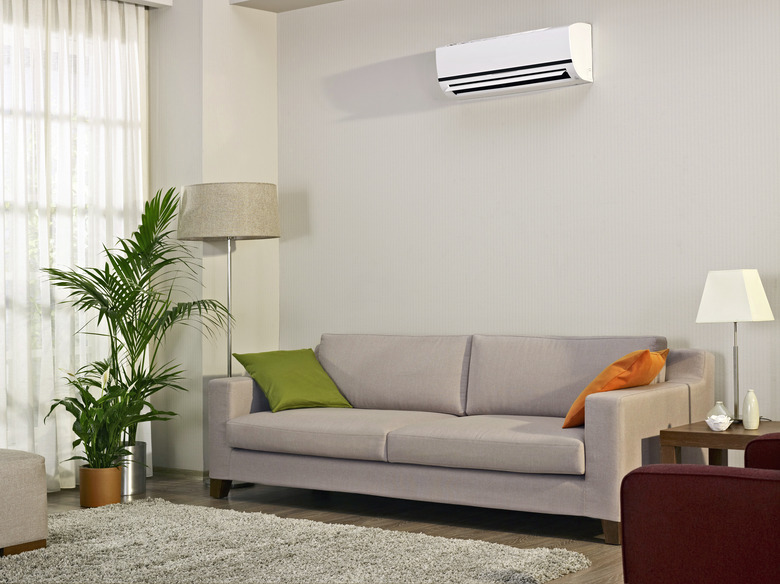How To Find The Drain On A Room Air Conditioner
We may receive a commission on purchases made from links.
As it cools the air, a room air conditioner also dehumidifies, and the moisture it pulls out of the air has to go somewhere. That somewhere is a drain pan at the bottom of the unit, which would fill up and overflow if it didn't have a drain hole or some other means to empty the water. If the unit has a hole, it's underneath the condenser coils, which are located in the part of the machine that overhangs the outside of the building.
Some air conditioners have an alternate means of draining water, called a slinger ring. These units also have a drain hole, but it's plugged during normal operation and should only be unplugged when you need to drain water to move the unit or if the slinger ring isn't working and the pan overflows.
Locating the Drain Hole
Locating the Drain Hole
You have to go outside to find the drain hole on a window air conditioner. It may be connected to a drainage hose, and if so, all you have to do is follow the hose to the drain pan and voilá — there's the drain hole. If the unit doesn't have a drain hose attached, just look for dripping water and follow it to the source. Of course, if the pan is overflowing, water could be dripping from the edges of the drain pan as well, so probably the most reliable method to find the drain opening is to get underneath the machine and look up.
Unfortunately, you usually can't access the drain hole from inside the building without undertaking some major disassembly work. If you want access to the drain hole, it's a lot easier to remove the air conditioner from the window than it is to take it apart.
There's No Drain Hole
There's No Drain Hole
Some units don't need a drain hole, and if they have one, it is plugged during normal use. The reason for the omission of the drain hole is that the unit has a slinger ring. This is attached to the rear fan blade, and as the blade rotates, the ring picks up water from the tray and slings it against the condenser coils. In this way, the air conditioner makes use of the water it produces by using it to keep the coils cool, helping the machine to run more efficiently and preventing overheating.
If your air conditioner has a drain hole and it's plugged, you should leave in the plug because the unit needs the water that collects in the pan for its operation. You'll want to remove the plug if water starts to overflow from the pan, but that means the slinger ring isn't working, and the air conditioner needs to be repaired.
Keep the Drain Hole Open
Keep the Drain Hole Open
When a drain hole is the only method of emptying water from the drain pan, it's important for it to stay open, or water can overflow into the living space. Unfortunately, after years of use, an air conditioner can rust, and the rust can fall into the drain pan and block the opening. You can usually unblock it with a large flat-head screwdriver or a small, stiff bottle brush, but if it gets blocked again, you should remove the back cover and clean debris out of the drain pan.
This is easier to do if you take down the unit and put it on a workbench. If you leave it in the window and do the job from outside, make sure you unplug the unit or turn off the breaker in the main panel that controls it before removing the cover to expose the drain pan.
